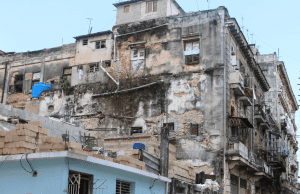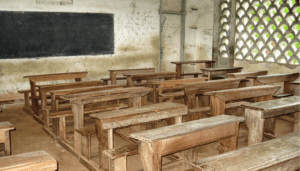Many children face violence in their daily lives
The World Health Organisation (WHO) estimates that approximately one billion children, aged 2-17 years old experienced violence during 2022. The WHO categorises violence as ‘physical, sexual, emotional… or neglect’. Violence can affect children of all ages and cultures, irrespective of gender.
Examples of violence against children
The UN explains that violence against children can take many forms. Here are some examples:
- cyberbullying and online manipulation
- child prostitution
- child marriage
- forced migration through war, natural disaster or persecution
- corporal punishment whether at school, at home or in employment
- child pregnancies
- pressure to join a gang or street group
- domestic violence
- trafficking
- bullying at school, at home or in employment
- child labour
- female genital mutilation (FGM)
- deprivation of basic rights or personal freedom.
Violence against children is ethically reprehensible and illegal. It is certainly not the fault of the children concerned, even if they think that it is. Moreover, the impact of violence is not just physical. It can be long-lasting and damaging to mental wellbeing, often leading to a downward spiral of low self-esteem, anxiety, depression and suicidal thoughts.
 The UN’s 16th Sustainable Development Goal (SDG)
The UN’s 16th Sustainable Development Goal (SDG)
Essentially, the 16th SDG declares that violence or any kind is morally unacceptable. Every child should feel safe and be able to live free from the shadow cast by the threat of violence. Children should feel aspirational, enjoy access to medical facilities, educational opportunities, and their rights should be acknowledged and respected.
Children are exposed to violence
The biggest driver of violence against children is poverty. There are several reasons why families fall into financial difficulties. For example, a wage earner may become ill and be unable to work. In that instance it is likely that older children will be expected to earn some money to help support the family. This can leave children vulnerable to child labour, early marriage, etc. Poverty can also lead to domestic violence because people may lash out when they face seemingly impossible decisions in prioritising the family’s wellbeing.
Dropping out of education
There is a danger that dropping out of school may seem like the right course of action if a parent becomes ill or incapacitated. Such a drastic step may be culturally expected, or at least accepted. Yet the UN is unequivocal in its conclusion that leaving education prematurely exposes children and young people to violence at home or when resorting to informal work to try to secure some income for the family.
 The importance of medical and educational services for children
The importance of medical and educational services for children
It is not simply a question of keeping well and being in a position to receive advice and expert diagnoses, important though these are. A medical professional is also able to spot signs of violence committed against children. This means that a child will be able to receive much needed help and advice. Likewise at school, teachers are likely to be trained to spot signs of abuse and violence. If a child does not have access to medical and educational services, then such indications of violence will go unnoticed.
What can be done to bring an end to violence against children?
In the medium-term violence against children damages their education, health, wellbeing and future prospects. So it is fair to say that by reducing poverty it is likely that violence against children will decrease as well. Adults within the family need safe, reliable, reasonably paid jobs to help ensure that the family has enough food, and a decent standard of living. Where employment rates are low or there are few job opportunities a social security safety net is vital to help support people who are facing difficult times. This should include free educational services for children, free access to basic healthcare services and medical advice, and employment advice and training for adults. Naturally creating such a social security system is a huge financial undertaking but it remains a top priority for ensuring that poverty and violence against children are eradicated.
Administrative help
Birth registration gives a child a legal identity. This simple process also gives the child legal rights. If a child has not been legally registered then it should be a formality and a priority to do so later in life. Registration means that children can prove their age, which is a crucial way to protect them against child labour. Any reputable organisation will not employ children. Moreover, legal identity also helps to ensure that children have access to medical services and to schooling. Services like these help to improve children’s wellbeing and create opportunities. They also help in the battle to eradicate poverty and violence.
The importance of a robust legal system
Children who experience violence also desperately need the support of a robust legal system. Their rights need to be highlighted and enforced, while perpetrators of violence need to be held to account.
Helping to keep violence at bay
Safe and healthy living conditions naturally contribute to a child’s wellbeing. Having a safe place to live, and basic needs fulfilled such as a clean water supply, decent sanitation and a healthy diet all help to reduce poverty and make violence less likely.
Online
While the internet is undoubtedly an exciting and appealing resource for children, it can also be a dangerous place. Keeping children safe online is of paramount importance to reduce the chances of their experiencing abuse or violence.
Climate change
Climate change is responsible for forced migration and displacement. Families can be compelled to separate in a search for better living conditions and employment opportunities. Ongoing severe drought remains prevalent in regions like the Horn of Africa, meaning that farmers are especially susceptible to the effects of climate change. Disruption caused to families can readily lead to violence against children.
The best way forwards to reduce violence against children
Government policy which is based upon integrity, equality and justice is essential to combat violence against children. It goes without saying that peaceful, stable conditions are beneficial for all people, and especially so for children. Moreover, if young people are forced to abandon their homes as refugees, they need the support of the international community to ensure that they do not fall prey to traffickers, illegal cartels, violence, exploitation and abuse.
Gender inequality
Gender inequality increases the risk of violence against girls. On cultural grounds some countries do not promote secondary age education for girls. This leaves them at a huge disadvantage socially and deprives them of future opportunities. Consequently girls are more prone to violence.
Empowering children
The UN urges that children’s opinions should be heard and respected by those in authority and government. Such a process generates a clearer appreciation of children’s values and rights both for the children themselves and for those in power. It also means that children and young people are able to speak out without fear of repression or being ignored. Irrespective of cultural background, children have a right to participate in ongoing debates about children. Meaningful representation and participation can go a long way to highlighting injustices and potential improvements that could be made to safeguard children’s rights and wellbeing.
Examples of what empowering children can mean
In Kenya, a group of girls has developed their own app to challenge the cultural practice and acceptance of FGM. It also offers help and advice to victims of FGM.
In India the Girls’ Advocacy Alliance trained a 17 year old girl to spearhead a campaign against child marriage;
In Tanzania a group of girls campaigned for a clean water supply to be established in their community. After meeting with the Prime Minister, the goal was achieved, saving a 14 km round walk to collect water from a river.
In Poland a 15-year-old Ukrainian refugee girl was inspired by local volunteers to help hundreds of other child refugees find safety and help.
There are many examples of young people who are campaigning against climate change and the effects of natural disasters.
Conclusion
The UN actively promotes a healthier, safer world for all children. This includes cherishing the planet for future generations; eradicating child labour, child marriage and cultural acceptance of FGM; ensuring that the internet is a safe resource, that justice is supportive of children, and that there are equal rights for boys and girls; that education is enshrined; that there is access to free medical services and fundamental services like clean water, sanitation, and safe housing; and that communities remain free from division, disorder, persecution and war. Upholding the UN’s SDGs remains essential to help end poverty and violence against children.



